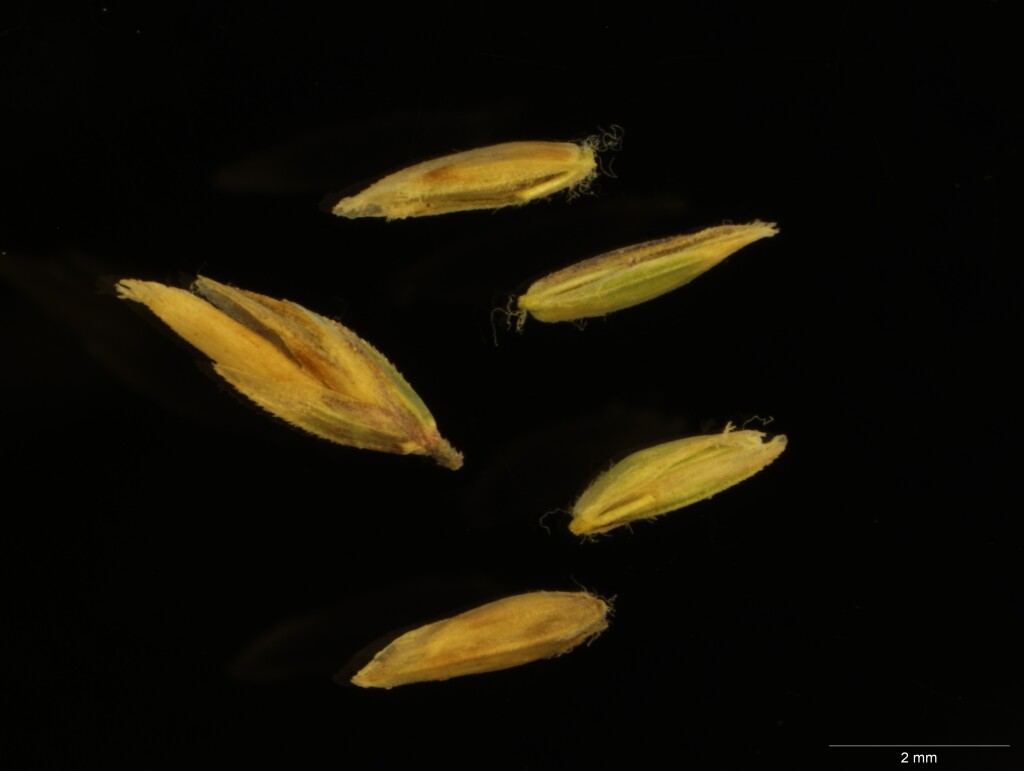Poa helmsii
VickeryRobust, strongly tufted, light green, leafy perennial, culms erect, usually (often strongly) compressed below the panicle, to 150 cm high. Leaves scabrous; sheath pale greenish, glabrous, variably scabrous; blade flat or slightly folded when fresh, 15–80 cm long, 3–8 mm wide, glabrous, prominently veined and scabrous, the midvein bordered by two narrow, pale, almost translucent bands; ligule truncate, firmly membranous, 0.5–2 mm long. Inflorescence a pyramidal panicle, usually somewhat contracted, to 35 cm long and 15 cm wide. Spikelets 3–8-flowered, 4–8 mm long, usually light green, rarely purplish; glumes 3-nerved, subequal, or the upper slightly longer, at least the lower narrowly pointed, 2–3.5 mm long, scabrous along nerves and sometimes along the sides; lemma 5-nerved, 2.5–3.5 mm long, glabrous except along the keel and lateral nerves in the lower half; web usually well-developed. Flowers Nov.–Mar.
VRiv, GipP, WaP, CVU, NIS, EGL, EGU, HSF, HNF, MonT, HFE, VAlp. Also NSW. A distinctive robust tussock of creeks, swamps and seepage zones mostly above c. 1000 m, or occasionally lower in cool air drainage areas. .
Walsh, N.G. (1994). Poaceae. In: Walsh, N.G.; Entwisle, T.J., Flora of Victoria Vol. 2, Ferns and Allied Plants, Conifers and Monocotyledons, pp. 356–627. Inkata Press, Melbourne.
 Spinning
Spinning

